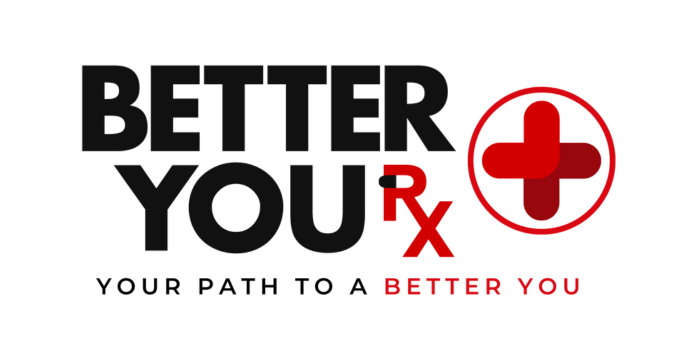HIV (Human Immunodeficiency Virus) affects people of all genders, but its symptoms and progression can vary significantly between men and women. Recognizing the signs early is critical for effective treatment and prevention of transmission. Women may experience specific symptoms influenced by hormonal, anatomical, and sociocultural factors, making awareness of these signs essential for early detection and care.
Understanding HIV in Women
HIV attacks the immune system, compromising the body’s ability to defend against infections. The progression of HIV follows three main stages:
- Acute HIV Infection: Occurs 2–4 weeks after exposure. Symptoms are often flu-like.
- Chronic HIV Infection: The virus continues replicating, but symptoms may be absent or mild. This stage can last for years without proper treatment.
- AIDS (Acquired Immunodeficiency Syndrome): The final stage, marked by severe immune system damage, increasing susceptibility to opportunistic infections and cancers.
HIV symptoms in women may differ slightly from men due to physiological differences and the potential for gynecological complications. Recognizing these distinctions is vital for early diagnosis and effective management.
Early Symptoms of HIV in Women

Early-stage HIV symptoms in women often resemble common viral infections, making them easy to overlook. Common early signs include:
- Fever: A persistent low-grade or high fever, often accompanied by chills.
- Fatigue: Feeling unusually tired without explanation.
- Sore Throat: Often mistaken for a common cold or strep throat.
- Night Sweats: Excessive sweating during sleep, even in cool conditions.
- Swollen Lymph Nodes: Tender lumps in the neck, armpits, or groin.
- Muscle and Joint Pain: Aching sensations in the body, resembling flu-like symptoms.
- Rash: A widespread or localized rash, often on the torso.
- Mouth Ulcers: Painful sores that make eating or drinking difficult.
These symptoms typically appear within 2–4 weeks after exposure and may last for several days to weeks. It’s important to note that not all women experience these signs, and the absence of symptoms does not rule out HIV.
Chronic HIV Symptoms in Women

As the virus progresses, women may experience more persistent and severe symptoms. Common chronic HIV symptoms include:
- Recurrent yeast infections: Vaginal or oral yeast infections that are difficult to treat.
- Menstrual irregularities: Missed periods or changes in cycle regularity, often linked to the virus’s impact on hormones.
- Pelvic inflammatory disease (PID): More severe or recurrent episodes than usual.
- Weight loss: Unexplained weight loss, known as “wasting,” even with a healthy diet.
- Night sweats: Profuse sweating during sleep.
- Chronic diarrhea: Prolonged episodes without an identifiable cause.
Symptoms of AIDS in Women
Without treatment, HIV can progress to AIDS, the most severe stage of the condition. Symptoms include:
- Significant Weight Loss: Also known as wasting syndrome.
- Chronic Diarrhea: Often due to opportunistic infections.
- Recurring Fever: That persists or fluctuates over time.
- Skin Discoloration: Red, pink, or brown spots, particularly on the skin or mucous membranes.
- Neurological Symptoms: Memory loss, confusion, or difficulty concentrating.
- Mouth and Genital Sores: Non-healing ulcers that can lead to pain and discomfort.
AIDS increases vulnerability to infections like pneumonia, tuberculosis, and fungal infections, many of which can become life-threatening without medical intervention.
Gynecological Symptoms of HIV in Women

HIV uniquely affects women’s reproductive health. Common gynecological complications include:
- Frequent Vaginal Infections: Including yeast infections and bacterial vaginosis.
- Increased Risk of Cervical Cancer: Due to co-infection with HPV (Human Papillomavirus).
- Pelvic Pain: Often linked to pelvic inflammatory disease.
- Irregular Menstrual Cycles: Missed periods or severe premenstrual symptoms.
Early detection and regular gynecological exams can help manage these complications effectively.
Opportunistic Infections and Advanced HIV
When untreated, HIV weakens the immune system, increasing vulnerability to opportunistic infections (OIs) and cancers. Women with advanced HIV may notice:
- Frequent respiratory infections: Including pneumonia or bronchitis.
- Tuberculosis (TB): A leading cause of death among people with HIV globally.
- Human papillomavirus (HPV)-related conditions: Including cervical cancer, more common in women with HIV.
- Severe herpes outbreaks: Including genital and oral herpes.
HIV Symptoms Unique to Women
While many HIV symptoms overlap across genders, women face unique challenges:
- Reproductive health issues: Conditions like severe menstrual cramps, abnormal vaginal discharge, and chronic pelvic pain may be more pronounced.
- Increased risk of cervical cancer: Women with HIV are at higher risk due to weakened immune response against HPV.
- Pregnancy complications: HIV can lead to preterm labor or low birth weight if untreated.
How can you tell if a woman has HIV?
HIV cannot be diagnosed based on symptoms alone. Diagnostic testing is essential. Testing options include:
- Antibody Tests: Detect antibodies produced by the immune system in response to HIV.
- Antigen/Antibody Tests: Detect both HIV antigens and antibodies for early detection.
- Nucleic Acid Tests (NATs): Identify the virus itself and are highly accurate.
If you suspect exposure to HIV or experience any of the symptoms described, consult a healthcare provider immediately for testing.
Risk Factors for Women
Certain factors increase the likelihood of HIV transmission among women:
- Unprotected sex: Particularly with high-risk partners or in relationships with unequal power dynamics.
- Biological vulnerability: The female anatomy makes women more susceptible to HIV during vaginal intercourse.
- Coexisting STIs: Infections like chlamydia or gonorrhea increase the risk of HIV transmission.
- Gender-based violence: Women in abusive relationships may face barriers to negotiating safe practices or accessing care.
Prevention and Treatment
Preventing HIV involves practicing safe behaviors and using preventive medications when necessary. Key measures include:
- Condom Use: During sexual activity to reduce transmission risk.
- Pre-Exposure Prophylaxis (PrEP): For individuals at high risk of HIV.
- Post-Exposure Prophylaxis (PEP): Emergency treatment after potential exposure.
Treatment involves antiretroviral therapy (ART), which suppresses the virus, preventing disease progression and reducing the risk of transmission.
The Importance of Testing
Early testing is essential to detect HIV and initiate antiretroviral therapy (ART), which can significantly improve quality of life and prevent transmission. Women experiencing any symptoms or with risk factors should seek testing promptly.
Living with HIV
Thanks to advancements in ART, women living with HIV can lead healthy, fulfilling lives. Effective treatment suppresses the virus, preventing disease progression and reducing transmission risk to nearly zero when viral loads are undetectable.
How Better You Rx Can Support Your Journey
Better You Rx, a Canadian Pharmacy Affiliate-affiliated website, connects individuals with resources to manage chronic conditions like HIV. By providing access to affordable, reliable medications, Better You Rx ensures that treatment remains accessible and effective. For women living with HIV, timely medication delivery can be a lifeline in maintaining health and managing the condition effectively.
Conclusion
Understanding HIV symptoms in women is key to early detection and treatment. While the symptoms may vary, vigilance and regular testing can help women manage the condition and live healthier lives.
FAQs on HIV Symptoms in Women
Are women at greater risk of contracting HIV compared to men?
Yes, women are at a higher risk, especially through receptive unprotected sex, as it is generally riskier than insertive sex.
What are the early symptoms of HIV in women?
Early symptoms often resemble flu-like conditions, including fever, chills, night sweats, rash, muscle pain, sore throat, fatigue, swollen lymph nodes, and mouth ulcers.
Why are HIV symptoms in women sometimes harder to detect early on?
Many women may not experience noticeable symptoms in the early stages, which can delay diagnosis. This highlights the importance of regular testing, especially if there has been potential exposure.
How does HIV progress in women if left untreated?
HIV weakens the immune system over time. In the acute stage, flu-like symptoms may appear. The chronic stage might not show any symptoms, but the virus continues to damage the immune system. Untreated, it can progress to AIDS, characterized by severe immune suppression and opportunistic infections.
Are there specific symptoms of HIV unique to women?
Yes, some symptoms are gynecological, including recurrent vaginal yeast infections, bacterial vaginosis, menstrual irregularities, and an increased risk of cervical cancer.
Can women with HIV have a healthy pregnancy?
Yes, with proper treatment, women with HIV can have a healthy pregnancy. Antiretroviral therapy reduces the risk of transmitting the virus to the baby. Regular prenatal care and adherence to medication are crucial.
What is AIDS, and how does it differ from HIV?
AIDS is the advanced stage of an HIV infection, occurring when the immune system is severely weakened. It is characterized by opportunistic infections and conditions such as pneumonia, memory loss, and certain cancers.
Can HIV in women cause additional health complications?
Yes, HIV can increase the risk of heart disease, osteoporosis, early menopause, and gynecological issues like cervical cancer.
How can women protect themselves from HIV?
Preventive measures include using condoms, discussing pre-exposure prophylaxis (PrEP) with a healthcare provider, avoiding the sharing of needles, and regular testing if at risk.
What should a woman do if she suspects HIV exposure?
She should immediately consult a healthcare provider and get tested. Early diagnosis and treatment are key to managing the infection and preventing its progression.
Are there treatments available for HIV?
Yes, antiretroviral therapy (ART) is highly effective at suppressing the virus, improving quality of life, and reducing transmission risks.



